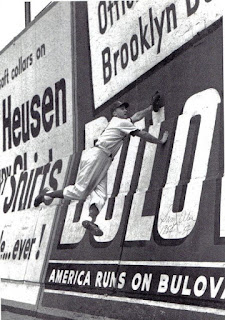The cups of coffee for many retired players just got a bit sweeter: Major League Baseball announced Thursday in conjunction with the Major League Baseball Players Association an
agreement to make annual payments to retired players who played before 1980 that did not have enough service time to qualify for a retirement benefit.
Since the 1980 season, all Major League players have vested as members of the benefit plan after just one day of service in the Major Leagues. Prior to 1980, players secured a pension benefit only after completing at least four years of Major League service. While these payments are not truly a pension for these retirees, it is income that will go a long way for many.
Author Doug Gladstone illuminated the plight of the 874 retirees that fell into the pension gap with his 2010 book “
A Bitter Cup of Coffee.” In the book he details the struggle of the many veterans who have worked tirelessly to get the powers in baseball to change their stance on this issue of pension benefits. All of these alumni paid into the pension fund without receiving anything in return while MLB made record profits. All they wanted was a piece of what they helped to start.
“We don't live in a perfect world, and this is far from a perfect solution to this problem," Gladstone said in a release on Thursday. "What was announced today doesn't provide health insurance coverage, nor will any player's spouse or loved one receive a designated beneficiary payment after the man passes.”
While the arrangements may not be ideal for Gladstone, he does acknowledge that the men that he advocated for will be receiving payments for their service.
"However, I am elated that these men are at long last finally going to be compensated for their service and contributions to the national pastime. This was a wrong that should have been righted years ago.”
 |
| Steve Grilli / Youtube |
Steve Grilli, a pitcher for the Detroit Tigers and Toronto Blue Jays from 1975-1979 is one of the younger players included in this agreement. At the age of 61, he missed the full pension by one game. He was on the 40-man roster for the entire 1980 season with the Blue Jays. Unfortunately for Grilli, his phone never rang.
“I wasn’t getting rich playing ball," said Grilli during a phone interview Friday evening. "I drove a UPS truck in between seasons. I just wanted baseball to do the right thing. That’s been my mantra throughout all of this.
"I’m not going to say they did the right thing; they did something. I’m very sympathetic for the guys that passed on that didn’t get at shot at this. They’re making the gesture of giving us the same thing they gave the Negro Leaguers a few years back. It shows you they made a mistake. If they offered it to them, why wait all this time to do it for us?”
Grilli feels that this offer from MLB and the MLBPA is an appeal to get the retirees away from the bargaining table.
“There was a dam with a hole in it which was us; that was the problem," he said. "I think they just put their finger in it to hold it off and didn’t permanently fix it. I’m more appeased than satisfied. Let’s just give them this and they’ll go away. Should I die tomorrow, my wife isn’t going to get the small amount that I will be getting."
Alumni from the New York area teams that fell into this pension gap were pleased to hear that they will finally be compensated for their years of service. Former New York Yankee pitcher Johnny James, who pitched from 1958-1961, was excited to hear the news.
“About two months ago, Eli Grba had sent me an article from the Chicago papers that they were talking about it," James said from his Arizona home. "It's exciting to think about because it's just nice. I don't expect it to be a lot, but the fact that it is something, is very nice. I knew what the deal was when I played and the fact that I didn't play long enough wasn't Major League Baseball's fault, it was mine. I will admit when I saw the article, it gave me a good feeling.”
Former Brooklyn Dodger and New York Yankee pitcher Fred Kipp, whose ten year career yielded stints in the big leagues from 1957-1960, echoed similar sentiments.
“We can use it.," Kipp said. "I'm not destitute. I played about a year and a half in the majors and about 10 years in pro ball. I'm not bitter or anything. That was the rule, you had to have five years."
Fortunately for the 79-year-old Kipp, he had a construction business for 40 years that provided support for his family after baseball.
Playing for the New York Mets from 1973-1974, George “The Stork” Theodore was a favorite in many Queens households. Now living in Salt Lake City, Utah, Theodore shared his appreciation for the work that Gladstone performed to promote the cause.
“I know Doug Gladstone has been our greatest ally in this with his book A Bitter Cup of Coffee," Theodore said. "I think it is wonderful. Like I said, he's been fighting for us for quite a while and I know about four or five other players in the Utah area that are in the same boat as me. We're appreciative and it will be a nice help.”
With praise from players like Theodore, Gladstone is glad that his work did not fall on deaf ears.
“My sole purpose in writing this book was to do right by the boyhood heroes of my youth, who gave me numerous hours of enjoyment and pleasure while growing up. If in some small way my book helped bring this issue to light, I couldn't be more pleased."


















